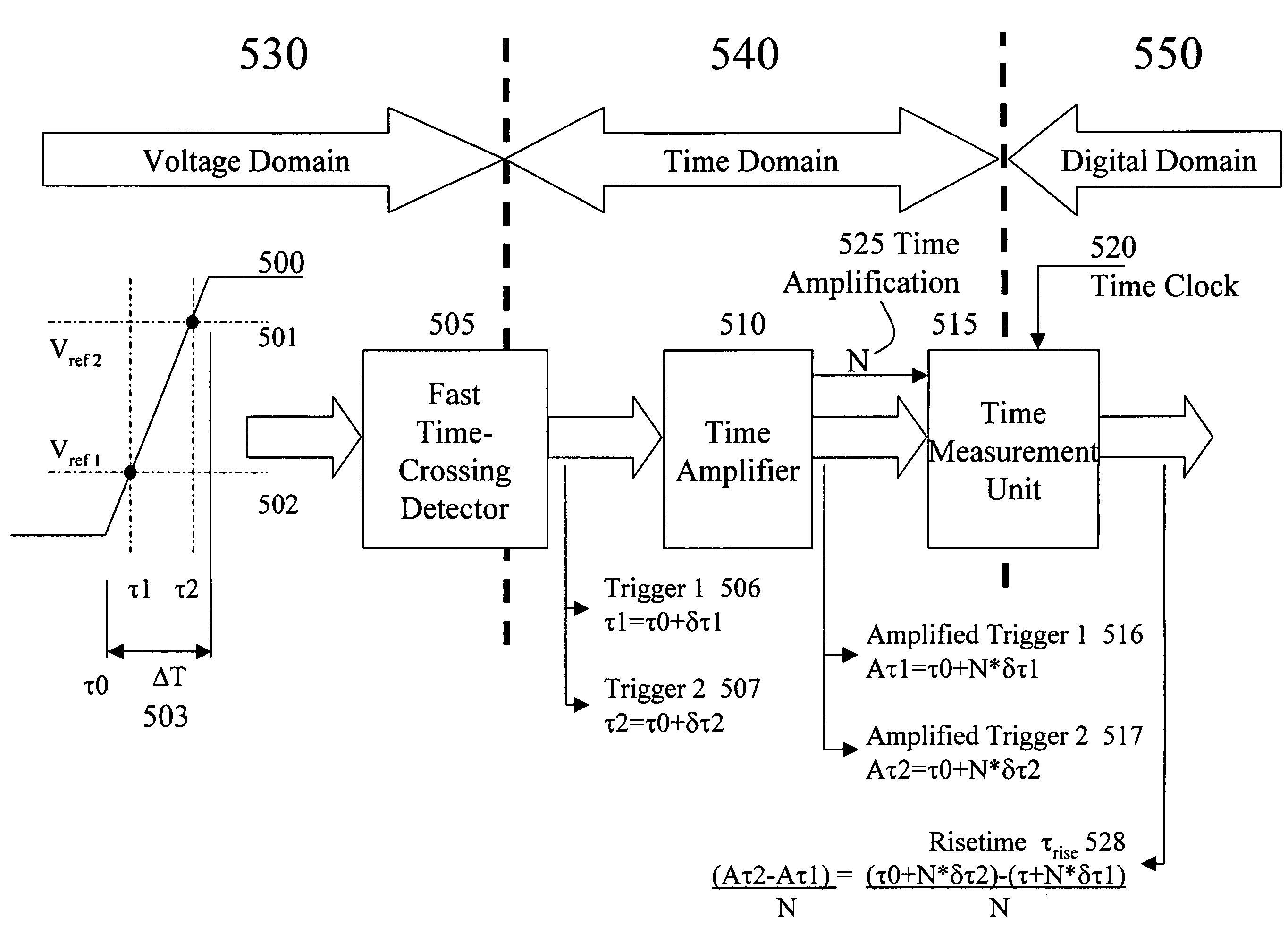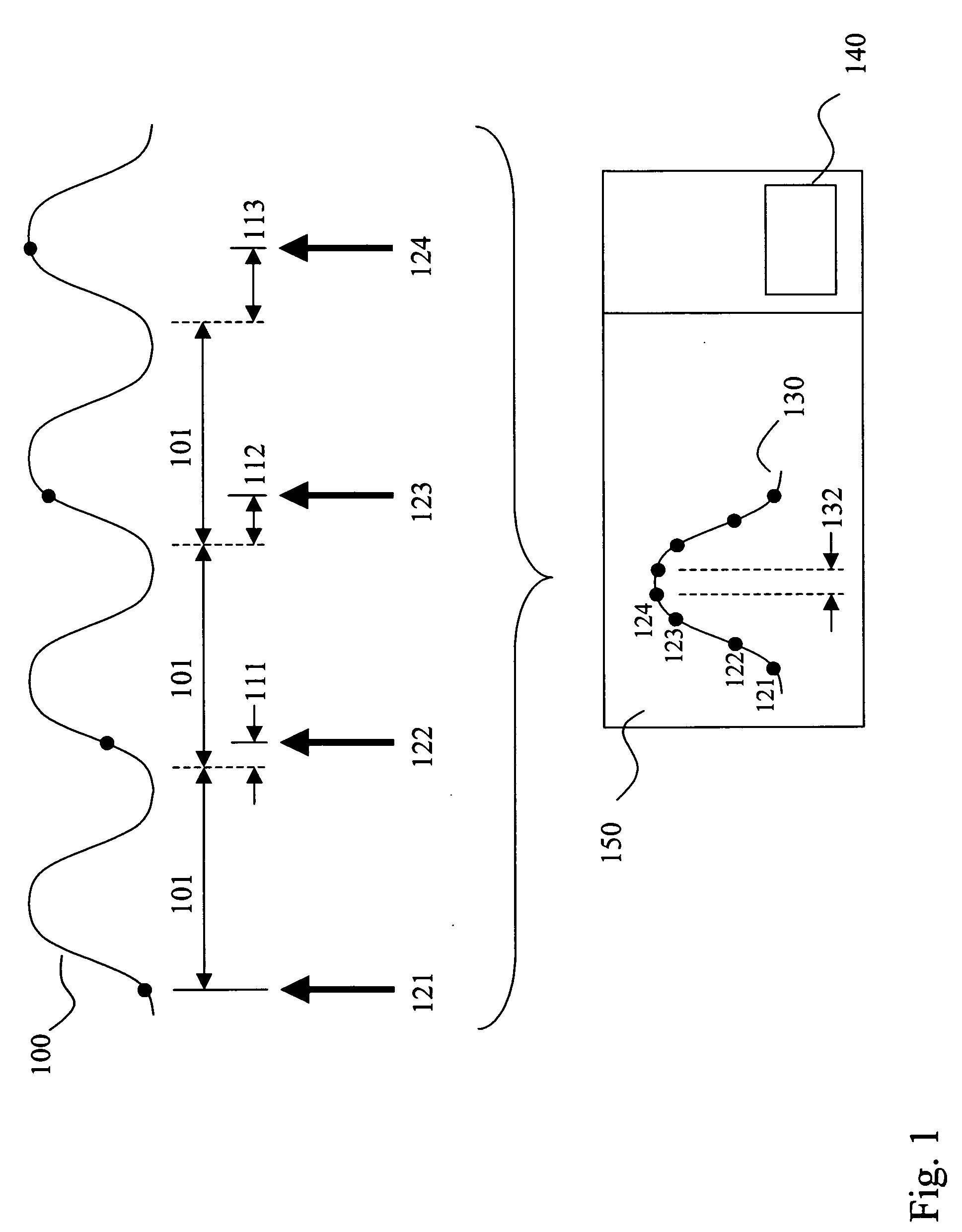Embedded time domain analyzer for high speed circuits
a time domain analyzer and high-speed circuit technology, applied in the direction of pulse technique, pulse characteristics measurement, transmission monitoring, etc., can solve the problems of circuitry for testing adding additional problems, not improving the functions of primary circuits, and not being more robust to process or environmental parameters variations
- Summary
- Abstract
- Description
- Claims
- Application Information
AI Technical Summary
Problems solved by technology
Method used
Image
Examples
Embodiment Construction
[0074]Referring to FIG. 1, illustrated schematically is the prior art approach of under-sampling to characterize a high-speed signal. Shown is a repetitive waveform 100 having a period ΔT 101, which is sampled with a sampling instrument at initial time point 121 and subsequent time points 122, 123, and 124. The subsequent time points 122, 123 and 124 are delayed sequentially relative to each preceding time point 121, 122, and 123 respectively by δT. As a result, the second sampling point 122 is delayed by a delay 111 equal to δT, the third sampling point 123 is delayed by an overall delay 112 of 2δT, and the fourth sampling point 124 is delayed by an overall delay 113 of 3δT relative to the repeating waveform 100 of period ΔT 101.
[0075]The resulting samples 121 through 124 are then processed by a processor 140, which takes the sampled signals from the sampling head (not shown for clarity) and drives an oscilloscope display 150. This results in each of the sampled points 121 through ...
PUM
 Login to View More
Login to View More Abstract
Description
Claims
Application Information
 Login to View More
Login to View More - R&D
- Intellectual Property
- Life Sciences
- Materials
- Tech Scout
- Unparalleled Data Quality
- Higher Quality Content
- 60% Fewer Hallucinations
Browse by: Latest US Patents, China's latest patents, Technical Efficacy Thesaurus, Application Domain, Technology Topic, Popular Technical Reports.
© 2025 PatSnap. All rights reserved.Legal|Privacy policy|Modern Slavery Act Transparency Statement|Sitemap|About US| Contact US: help@patsnap.com



